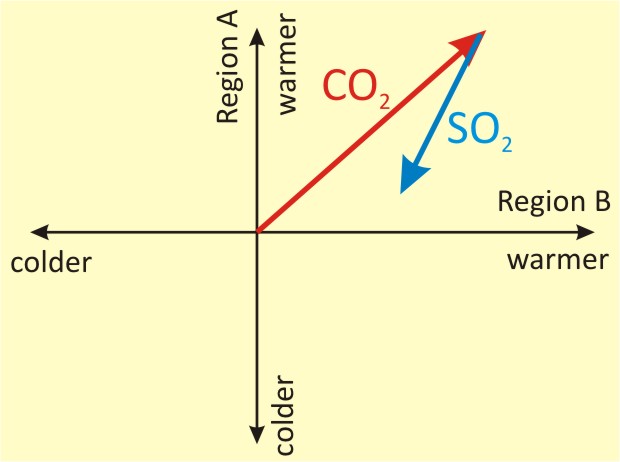Yesterday afternoon, I went to the Longworth House Office Building on Capitol Hill to attend a briefing arranged by the American Meteorological Society on the topic of geoengineering as a response to climate change. The two speakers, Ken Caldeira and David Keith, argued that the U.S. should invest heavily in geoengineering research, so we can figure out what’s safe and what’s irresponsible before we actually make any decisions about which strategies (if any) to employ. Keith discussed solar radiation management (SRM), which he limited to the notion of injecting sulfate aerosols (SO2) into the stratosphere, a sustained “artificial Pinatubo” to moderate incoming sunlight. [Caldeira covered carbon dioxide removal (CDR) strategies, and though I don’t have the time to get into all of them here, they are worth your consideration, and so I’d refer you to an article co-authored by Caldeira and Keith that appeared in the Fall 2010 issue of Issues in Science and Technology. That piece basically spells out both of their arguments.]
I wanted to take this blog post to share with you an aspect of Keith’s presentation that I found particularly thought-provoking. He pointed out that the cooling effect of sulfate is going to be widely distributed, as is the warming effect of CO2, but that not every area will be effected the same way. In other words, SO2 is not equal to “negative CO2“. SRM is not as simple as that. To illustrate this point, he put up a graphic that looked something like this:

Plotted on this conceptual image are temperatures for two regions, dubbed “A” and “B”. Relative to their current average temperatures, adding CO2 only will make them both warmer, but by different amounts. Adding SO2 only will make them both cooler, but by different amounts.
So what if as a global society we decide to counter anthropogenic warming with a strategy of adding sulfate aerosols to the atmosphere? It might look something like this:

The CO2 and the SO2 play at different levels of efficacy in the two different regions…

Both regions “A” and “B” end up warmer than before, but by different amounts. “A” is only a little warmer, and “B” is a lot warmer. So the government of “A” says “We need to get back to where we were,” and (as independent agents, without consulting “B”) they adopt a policy of adding some more SO2 to the system:

Now region “A” is back to the same average temperature they enjoyed prior to global warming, but Region “B” is still significantly warmer than the pre-CO2, pre-SO2 injection state. So, “B” is now pissed off. Because sulfur injection is relatively cheap and fast-acting (as compared to CDR strategies), maybe the government of “B” now adopts a policy of adding SO2 themselves. Naturally, this sulfate doesn’t respect the national borders of region “B,” and mixes into the global atmosphere, with the following result:

Now the temperature of “B” is back to where they started in the pre-industrial world. But “A” finds itself in a situation that is dramatically cooler than its pre-industrial state, and now it’s “A”‘s turn to be pissed off. What will “A” do in response to secure their own regional climate security? …And how will “B” retaliate to that?
Because of its relatively (compared to CDR) low cost and potential to act quickly (e.g. Pinatubo), SRM may be adopted by certain governments without consulting other governments. But national policies have international effects, and these plucky geoengineers may be perceived as rogue states by their neighbors.
The implications are messy, in terms of international politics. The same is often pointed out about forging international agreement about carbon reduction strategies, with some pundits advocating geoengineering as a simpler alternative. But as this hypothetical example shows, geoengineering of the SRM flavor also comes loaded with trans-national baggage.
What exactly are the particulars of the SRM approach? What is the magnitude of the effects that I’ve shown as blue and red arrows? Are these effects really linear? What are the other physical complications? What happens when you add in another fifteen regions? And what about climate effects besides temperature, like rainfall? We don’t know. This stuff is complicated.
Until we have a better handle on the myriad systemic effects of geoengineering actions, policy decisions that advocate for SRM are almost certainly hasty, potentially problematic for neighboring regions, and possibly irresponsible for nations to pursue without intense international cooperation. Hence: let’s really explore this stuff now (i.e., fund some research into it) before the time comes where someone (maybe not us) decides they are going to do it.
